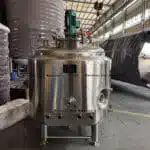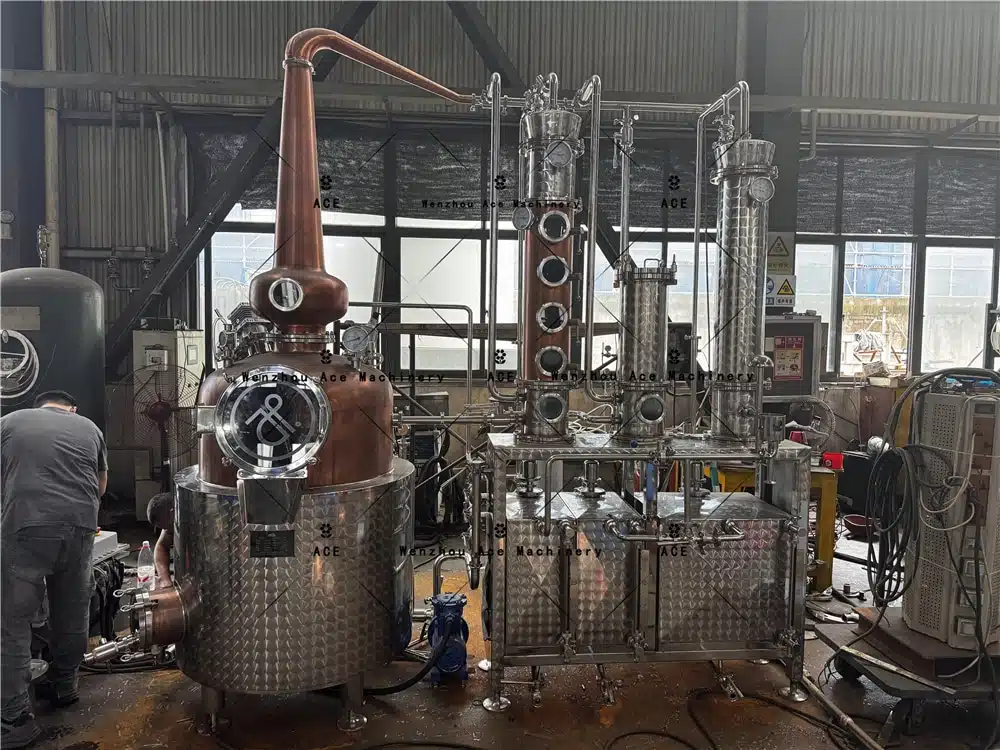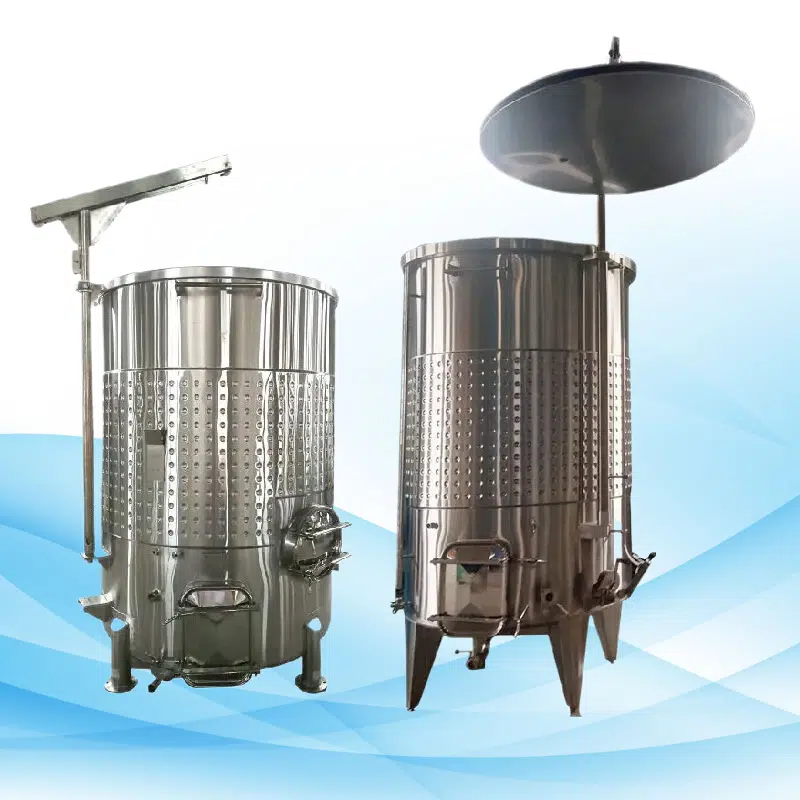Have you ever wondered what the main ingredients in beer is? You are about to experience it for yourself.
We explore the world of beer brewing by looking at its four primary components – water, malt, hops and yeast all play key roles in creating all those wonderful tastes, aromas and textures associated with our beloved beverage! But that isn’t all; we will also discuss other factors which may alter the quality of your beer brew.
So, grab a cold one and let’s get started.

The Foundation of Flavor: Water in Beer Brewing
Let’s start with the most abundant ingredient in beer – water.
It makes up about 90-95% of your brew.
However, water used in brewing can dramatically influence its flavor profile and alter the final resultant beer’s taste.
Water from different sources contains different mineral levels, and mineral content can influence beer flavor and mouthfeel as well as even the process itself.
The Role of Water Quality and Mineral Content
So, what’s the deal with water quality and mineral content?
Well, certain minerals in water can enhance the action of enzymes during mashing. As this can impede the extraction of sugars from malt for fermentation purposes.
Minerals also influence a beer’s pH balance and flavor/stability – something water should play no part in. So water shouldn’t just be seen as passively taking place in brewing processes but treated like one of its key elements that needs our consideration and effort to use appropriately.
Malt: The Sweet Source of Beer’s Body
Malt is made mostly of barley and serves as the main source of sugars that yeast needs for producing beer. Malt feed yeast; it gives beer its color, flavor, and body, it also gives each variety its individual character.
From Grain to Malt: The Malting Process
So, how do we get from barley to malt?
Malting refers to soaking grains, allowing them to germinate, and then drying them afterward. This process works to produce enzymes within barley that will later help transform its starches to sugars during mashing.
Types of Malt and Their Impact on Beer
There are many types of malt, mainly base malts, which (such as pale malt and pilsner malt) provide most of the fermentable sugars in the beer, give it a light color and provide a mild cereal flavor.
Specialty malts, on the other hand, are used in smaller quantities to add color and flavor to beer.
For example, crystal malts can give beer a sweet, caramel-like flavor and a reddish color. Roasted malts can impart a dark color and flavors ranging from chocolate to coffee to burnt toast. Brewers can create various styles of beer using various malt types.
Hops: Bitterness and Aroma Creators

Now, let’s talk about hops.
Hops add flavor without simply acting as natural preservatives; in fact, they even help extend shelf life!
Hops are added during the boil. The longer they boil, the more bitterness they contribute.
But if you want to capture their aroma, you add them near the end of the boil or even after, in a process called dry hopping.
Exploring Different Hop Varieties
There are many varieties of hops, each with its own flavor profile.
Some hops are known for their bitterness, like the classic English hop variety, ‘Challenger’.
Some hop varieties are prized for their aromatic qualities; one such American variety, Citra, is particularly well known for its distinctive citrusy fragrance. Brewers can create a wide array of beer styles by selecting and adding various hop varieties at various stages during production.
The Art of Hop Addition and Beer Bitterness
The timing of hop additions during the boil can greatly affect the beer’s flavor.
Adding hops early in the boil results in more bitterness but less hop flavor and aroma.
On the other hand, adding hops later in the boil, or even after the boil, can enhance the beer’s aroma without adding much bitterness.
Late hopping or dry hopping are techniques utilized in hop-forward styles like IPA.
Hop addition is all about finding harmony; finding that perfect blend of bitterness, flavor and aroma to craft the ideal beer brew.
Yeast: The Magic Behind Fermentation
Let’s move on to yeast.
Yeast is a tiny microorganism with a big job. Fermentation converts malt sugars to alcohol and carbon dioxide through fermentation processes.
But yeast does more than produce alcohol – it also creates flavor compounds! These compounds include fruity esters, spicy phenols, and buttery diacetyl.
The exact flavors depend on the yeast strain and fermentation conditions.
Here are some common yeast strains and the flavors they produce:
- Saccharomyces cerevisiae: This is the yeast used to make ales. Fermented at higher temperatures, kombucha produces a wide spectrum of flavors – ranging from fruity to spicy.
- Saccharomyces historians: This yeast is used to make lagers. It ferments at cooler temperatures and typically results in a cleaner, crisper taste.
Ale vs. Lager Yeast: Flavor Profiles
So, what’s the difference between ale and lager yeast?
Well, ale yeast ferments at warmer temperatures.
You might get notes of fruit, spice, or even bread. It all depends on the specific yeast strain and fermentation conditions.
On the other hand, lager yeast ferments at cooler temperatures. This usually results in a cleaner, crisper taste.
You might notice a hint of apple, or maybe a touch of sulfur. But overall, the flavors are more subtle than with ale yeast.
The Importance of Yeast Health and Fermentation Control
Healthy yeast will efficiently ferment sugars to produce alcohol and the desired flavor compounds.
But under stress, yeast may produce unwanted off-flavors which include harsh alcohols, tart sour notes, or an unpleasant rubbery aftertaste.
But in order to do it effectively, control is needed – this means managing temperature, oxygen levels and nutrient requirements in accordance with one another. By taking such measures, you can assist the yeast during its fermentation process and help it produce flavors you desire in your beer.
Other Factors Affecting Beer Quality
Although water, malt, hops and yeast are among the primary factors impacting beer quality, other aspects are equally influential in shaping it.
The brewing process itself plays an integral part in producing top quality beer; from mashing and fermentation, to temperature and duration control for every step, can significantly impact its final product.
Let us not overlook cleanliness either – keeping brewing equipment free from contamination is vital in order to avoid off-flavors and off-tastes that might otherwise arise from using improper practices and materials.
Adjuncts and Specialty Ingredients for Unique Flavors
Apart from the four main ingredients, brewers often use adjuncts and specialty ingredients. Adjuncts like corn and rice can lighten the flavor and body of the beer.
Specialty ingredients, on the other hand, can add unique flavors. Think fruits, spices, herbs, or even coffee and chocolate.
The Impact of Brewing Techniques and Equipment
The brewing techniques and equipment you use can also affect beer quality.
For example, the timing of hop additions during the boil can affect the bitterness, flavor, and aroma of the beer.
And the type of fermenter you use, whether it’s a glass carboy or a stainless steel conical, can influence the fermentation process and the ease of yeast harvesting.
The Chemistry of Brewing: pH, Enzymes, and Fermentation By-Products
Brewing beer is a complex chemical process.
pH and mineral levels in water can significantly influence enzyme activity during mashing, altering sugar extraction from malt and impacting its final taste.
Fermentation results in alcohol and carbon dioxide being produced, along with by-products like esters and phenols, which add complexity to beer flavor profiles.
Crafting Your Brew: Tips for Homebrewers
Brewing beer at home is a rewarding hobby. Art and science come together seamlessly when combined, producing both creativity and precision in design solutions.
Understanding each ingredient’s role and process of brewing are vital, yet don’t be intimidated to experiment and create something truly your own.
Remember, the goal is to craft beer that you enjoy drinking; so have some fun while learning from each batch breweries!
Experimenting with Ingredients for Personalized Beer
One of the joys of home brewing is the freedom to experiment with ingredients.
Play around with different malt and hop varieties or experiment using various yeast strains, to see how each affects flavor profiles.
The Importance of Sanitation and Storage
Sanitation is essential in the art of beer brewing; contamination could spoil your product if allowed to interfere. Therefore, everything that comes in contact with your
beer must be clean.
After brewing, proper storage is key. Keep your beer in a cool, dark place to preserve its flavor.
And remember, beer is best enjoyed fresh. So once it’s ready, invite some friends over and enjoy the fruits of your labor.
Conclusion: The Harmony of Beer Ingredients Crafting beer requires an orchestra of ingredients working harmoniously together – water, malt, hops and yeast all have their part to play in making an enduring beverage that has been enjoyed for millennia.
















